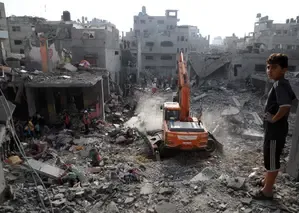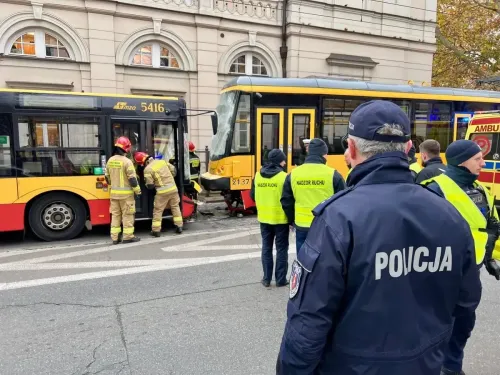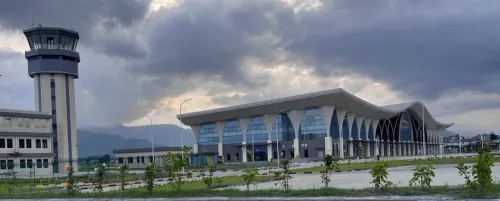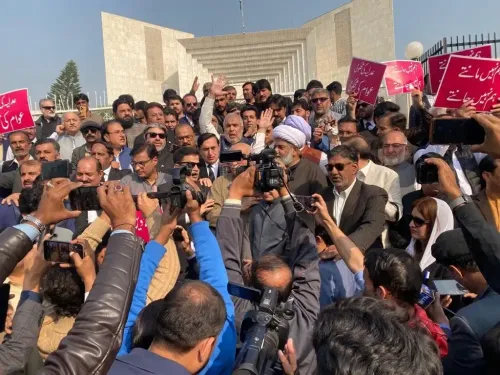Could Gaza Seize the Moment for Reconstruction?

Synopsis
Key Takeaways
- Hamas’s cautious acceptance of Trump’s proposal may open diplomatic channels.
- Ceasefire negotiations involve multiple nations.
- Hamas seeks to retain its military role while agreeing to some governance changes.
- Netanyahu's opposition complicates the path to a Palestinian state.
- A fleeting chance for reconstruction exists amid the ongoing conflict.
New Delhi, Oct 4 (NationPress) Hamas's hesitant acceptance of President Donald Trump’s proposal for a resolution might have opened a diplomatic gateway that has long been barred by conflict and distrust. This could be the opening that the nations facilitating a ceasefire in Gaza have been anticipating.
Representatives from Egypt, Qatar, Turkey, and the United States are likely to begin negotiations with Hamas officials, primarily in Doha and Jerusalem, to finalize the terms of a ceasefire.
Trump's comprehensive 20-point strategy indicates that a swift ceasefire would follow the release of living hostages, along with the return of deceased individuals' remains, in exchange for the hundreds of Palestinians currently detained by Israel beyond Gaza.
While Hamas has agreed to aspects like the release of hostages and the transfer of Gaza's governance, it has reportedly dismissed demands for disarmament and any unconditional surrender of arms.
An official announcement via the group's Telegram channel confirmed its willingness to free all Israeli hostages and return the bodies of the deceased. Additionally, it has agreed to transfer Gaza's administration to a technocratic Palestinian entity endorsed by Arab and Islamic nations. However, the organization has declined to disarm unconditionally, allow foreign oversight in Gaza, or remove its fighters from Palestinian territory.
These stipulations highlight Hamas's determination to retain its status as both a political and military force in Gaza. Consequently, negotiators will face challenges regarding Gaza’s governance structure.
Trump’s proposal envisions a technocratic, non-political Palestinian committee governing the Strip under an international oversight board led by the US. Reports indicate that Hamas insists on a Palestinian administration supported by national consensus and backed by Arab and Islamic nations.
Nonetheless, Israeli Prime Minister Benjamin Netanyahu has consistently and firmly opposed the creation of a Palestinian state west of the Jordan River, reiterating this stance in his recent address at the United Nations General Assembly (UNGA) in New York.
Both he and Trump have criticized nations that recognize a Palestinian state, arguing that acknowledging Palestine without addressing Hamas provides an undue incentive for the group.
While both leaders were making their statements at the UNGA, 156 out of 193 UN member countries had formally recognized the state of Palestine.
In the meantime, legislative elections in Israel are slated for October 2026, where Netanyahu’s ruling coalition includes far-right parties that firmly oppose any concessions toward a “two-state solution.”
Indeed, some members of his cabinet have called for the complete annexation of the West Bank, rendering any move towards a sovereign Palestinian state politically unfeasible for Netanyahu. Disagreements on these and other topics remain significant obstacles on the path to a comprehensive peace.
Yet, amidst the dire situation in Gaza, this moment of conditional optimism presents a fleeting opportunity to transition from destruction to reconstruction.









